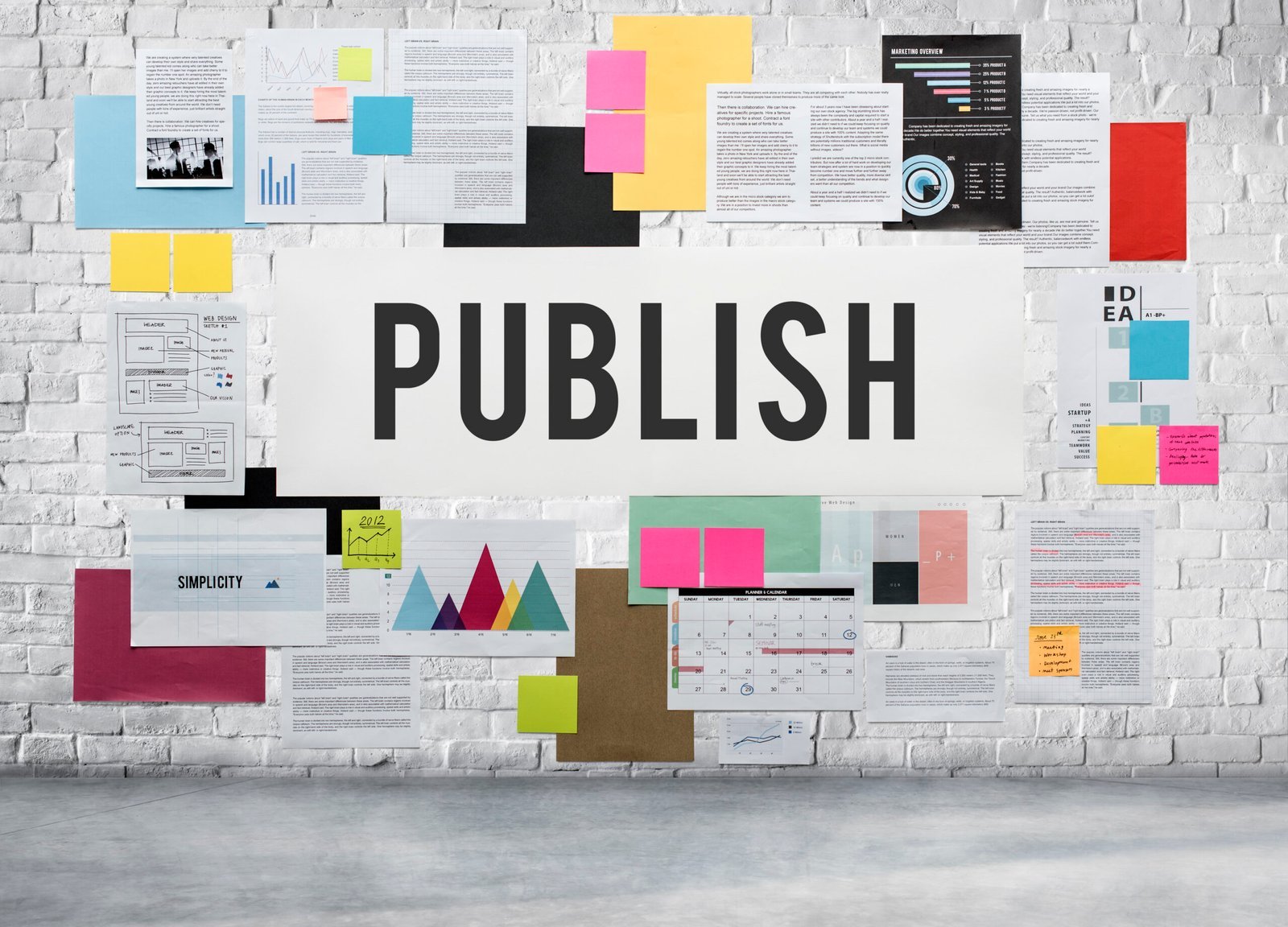In the ever-evolving landscape of the publishing industry, self-publishing has emerged as a powerful and accessible avenue for writers to share their work with the world. No longer confined to the traditional gatekeepers of the literary world, authors now have the autonomy to publish their books independently, reaching global audiences and retaining creative control over their work. This article delves into the intricacies of self-publishing, exploring its benefits, challenges, and the essential steps to successfully self-publish a book.
The Rise of Self-Publishing
The digital revolution has fundamentally transformed the publishing industry. Advances in technology, particularly the advent of e-books and print-on-demand services, have democratized the process of publishing, making it feasible for anyone with a story to tell to become an author. Self-publishing platforms such as Amazon Kindle Direct Publishing (KDP), IngramSpark, and Smashwords have further facilitated this shift, offering tools and resources that simplify the publishing process.
Benefits of Self-Publishing
Creative Control:
One of the most significant advantages of self-publishing is the creative control it affords authors. Traditional publishing often involves substantial editorial influence, which can alter the author’s original vision. In contrast, self-published authors retain full control over their content, cover design, and marketing strategies, ensuring that their work remains true to their initial concept.
Faster Publication:
Traditional publishing can be a lengthy process, with manuscripts often spending months or even years in the submission and review stages. Self-publishing circumvents these delays, allowing authors to publish their work quickly and efficiently. This speed to market is particularly beneficial for timely or trend-driven content.
Higher Royalties:
Self-published authors typically earn higher royalties compared to their traditionally published counterparts. While traditional publishers offer royalty rates ranging from 5% to 15%, self-publishing platforms like Amazon KDP offer up to 70% royalties on e-book sales. This higher revenue share can be a significant financial incentive for authors.
Global Reach:
Self-publishing platforms provide authors with a global distribution network, enabling their books to reach readers across the world. This extensive reach is particularly advantageous for niche genres or specialized topics that may not have a large market in any single country but can attract a significant global audience.
Challenges of Self-Publishing
Quality Control:
While self-publishing offers numerous advantages, it also comes with the challenge of maintaining high-quality standards. Without the support of traditional publishing houses, authors must ensure that their work is professionally edited, formatted, and designed. Investing in professional editing and cover design services is crucial to producing a polished and marketable book.
Marketing and Promotion:
One of the most significant hurdles for self-published authors is marketing their books. Unlike traditional publishers who have dedicated marketing teams, self-published authors must develop and execute their marketing strategies. This requires time, effort, and often a financial investment in promotional activities such as social media advertising, book reviews, and author events.
Distribution:
While self-publishing platforms provide global reach, securing physical distribution in bookstores can be challenging. Many brick-and-mortar bookstores are hesitant to stock self-published titles due to concerns about quality and return policies. Authors must be proactive in building relationships with local bookstores and exploring alternative distribution channels such as book fairs and online retailers.
Steps to Self-Publish a Book
1. Write and Edit Your Manuscript:
The foundation of any successful book is a well-written and meticulously edited manuscript. Dedicate time to writing, revising, and refining your work. Consider hiring a professional editor to review your manuscript and provide feedback on structure, pacing, and grammar.
2. Design a Professional Cover:
A compelling book cover is crucial for attracting readers and making a strong first impression. Work with a professional cover designer to create a visually appealing and genre-appropriate cover. Remember, your book cover is a key marketing tool that can significantly impact sales.
3. Format Your Book:
Proper formatting is essential for both e-books and print books. Ensure that your manuscript is formatted according to the guidelines of your chosen self-publishing platform. For e-books, this includes converting your manuscript into formats such as MOBI and EPUB. For print books, focus on layout, typography, and ensuring that the final product is free of formatting errors.
4. Choose the Right Self-Publishing Platform:
Selecting the appropriate self-publishing platform is a critical decision that will impact your book’s distribution, royalties, and overall success. Popular platforms include Amazon Kindle Direct Publishing (KDP), IngramSpark, and Smashwords. Each platform has its strengths and limitations, so research thoroughly to determine which one aligns best with your goals.
5. Set Your Pricing and Royalties:
Determine the pricing strategy for your book. Consider factors such as production costs, market demand, and competitor pricing. Most self-publishing platforms allow you to set your own prices and offer various royalty options. Experiment with different pricing models to find the optimal balance between affordability and profitability.
6. Upload and Publish Your Book:
Once your manuscript is edited, formatted, and your cover is designed, it’s time to upload your book to your chosen self-publishing platform. Follow the platform’s guidelines for uploading files, entering metadata (such as title, author name, and keywords), and selecting distribution options. Review all details carefully before finalizing the publication process.
7. Develop a Marketing Plan:
Marketing is a critical component of self-publishing success. Develop a comprehensive marketing plan that includes strategies for online and offline promotion. Utilize social media platforms, author websites, and email newsletters to build an audience and generate buzz for your book. Consider offering promotions, such as free or discounted e-book periods, to attract new readers.
8. Engage with Your Audience:
Building a loyal reader base requires ongoing engagement and interaction. Respond to reader reviews, participate in online forums and book clubs, and attend author events and book signings. Establishing a strong author presence and fostering relationships with readers can lead to word-of-mouth referrals and increased sales.
Case Studies of Successful Self-Published Authors
Andy Weir:
Andy Weir’s science fiction novel “The Martian” is a prime example of self-publishing success. Initially self-published as a series of blog posts, “The Martian” gained a significant following and was eventually picked up by a major publisher. The book’s success led to a blockbuster film adaptation, demonstrating the potential of self-publishing to launch a literary career.
E.L. James:
E.L. James’ “Fifty Shades of Grey” trilogy began as self-published e-books before becoming a global phenomenon. James leveraged online fan communities and social media to build a massive readership, leading to traditional publishing deals and film adaptations. Her story highlights the power of self-publishing in reaching a wide audience and achieving commercial success.
2. Hugh Howey:
Hugh Howey’s “Wool” series, originally self-published as e-books, achieved remarkable success and caught the attention of major publishers. Howey negotiated unique publishing deals that allowed him to retain e-book rights while partnering with traditional publishers for print distribution. His innovative approach underscores the flexibility and potential of self-publishing.
Ending Note
Self-publishing has revolutionized the literary world, providing writers with unprecedented opportunities to share their stories and connect with readers. While it comes with its challenges, the benefits of creative control, higher royalties, and faster publication make it an appealing option for many authors. By following the essential steps outlined in this guide and learning from the successes of self-published authors, aspiring writers can navigate the self-publishing landscape with confidence and achieve their literary dreams. In a world where technology continues to break down barriers, self-publishing stands as a testament to the power of individual creativity and determination.








Leave feedback about this